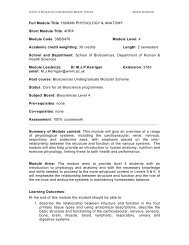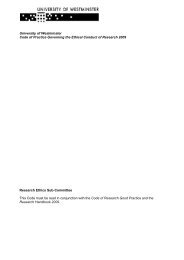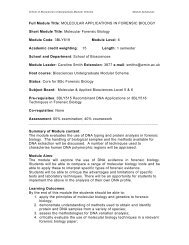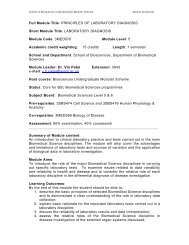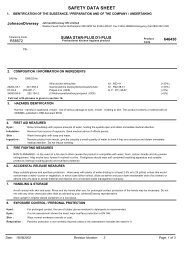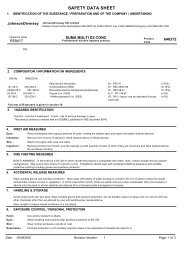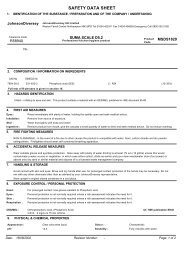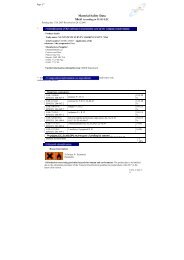CONTENTS 1. Introduction 1.1 Course Outline 1 1.2 Introduction ...
CONTENTS 1. Introduction 1.1 Course Outline 1 1.2 Introduction ...
CONTENTS 1. Introduction 1.1 Course Outline 1 1.2 Introduction ...
You also want an ePaper? Increase the reach of your titles
YUMPU automatically turns print PDFs into web optimized ePapers that Google loves.
Full Module Title: APPLIED IMAGING 2<br />
Short Module Title: APPLIED 2<br />
Module Code: 2DPI608 Module Level: 6<br />
Academic credit weighting: 15 credits.<br />
Length: 1 semester<br />
School:<br />
Media, Art and Design.<br />
Department:<br />
Photographic and Digital Media<br />
Module Leader: Efie Bilissi Extension: 4581<br />
Host <strong>Course</strong>:<br />
BSc (Hons) Photography and Digital Imaging<br />
Status:<br />
Option<br />
Pre-requisites:<br />
None.<br />
Co-requisites:<br />
None.<br />
Assessment: Practical work 40%, coursework 20%, written examination 40%<br />
Summary of Module content:<br />
Specialists optical systems for data capture. Testing and evaluation of optical systems. Aspects of<br />
scientific grade cameras. Medical imaging. Low light level imaging and surveillance systems.<br />
Stereoscopic vision and digital photogrammetry. Remote sensing. Imaging for forensic applications.<br />
Module Aims:<br />
• To provide an understanding of applied imaging techniques and systems for specialists/extreme<br />
data capture.<br />
• To introduce medical imaging methods, surveillance systems and forensic imaging methods.<br />
• To introduce the principles of stereoscopy and photogrammetry.<br />
Learning Outcomes:<br />
On completion of the module the successful student will be able to:<br />
<strong>1.</strong> Understand the principles of selected techniques and their role in a range of applications.<br />
2. Design, plan and execute a selection of relevant practical assignments.<br />
3. Select and use safely a range of specialist apparatus.<br />
4. Extract dimensional information from photographic and digital images.<br />
5. Research, analyse and report on a range of applications.<br />
Indicative syllabus content:<br />
Aspects of scientific grade cameras. Testing and evaluation of these systems.<br />
Specialist optical systems for data capture including under-water photography, extreme wide angle<br />
and telephotography.<br />
Panoramic imaging systems.<br />
Low light level and surveillance systems.<br />
Micro-imaging and photomicrography applications.<br />
Analytical and digital photogrammetry with topographical and terrestrial applications.<br />
Remote sensing.<br />
<strong>Introduction</strong> to medical imaging systems.<br />
Methods and applications in forensic imaging.<br />
Teaching and Learning Methods:<br />
The module consists of illustrated lectures, supported by supervised laboratory work in the ratio of<br />
1:2 and location assignments.<br />
DPI_Hbook 84 ©University of Westminster





